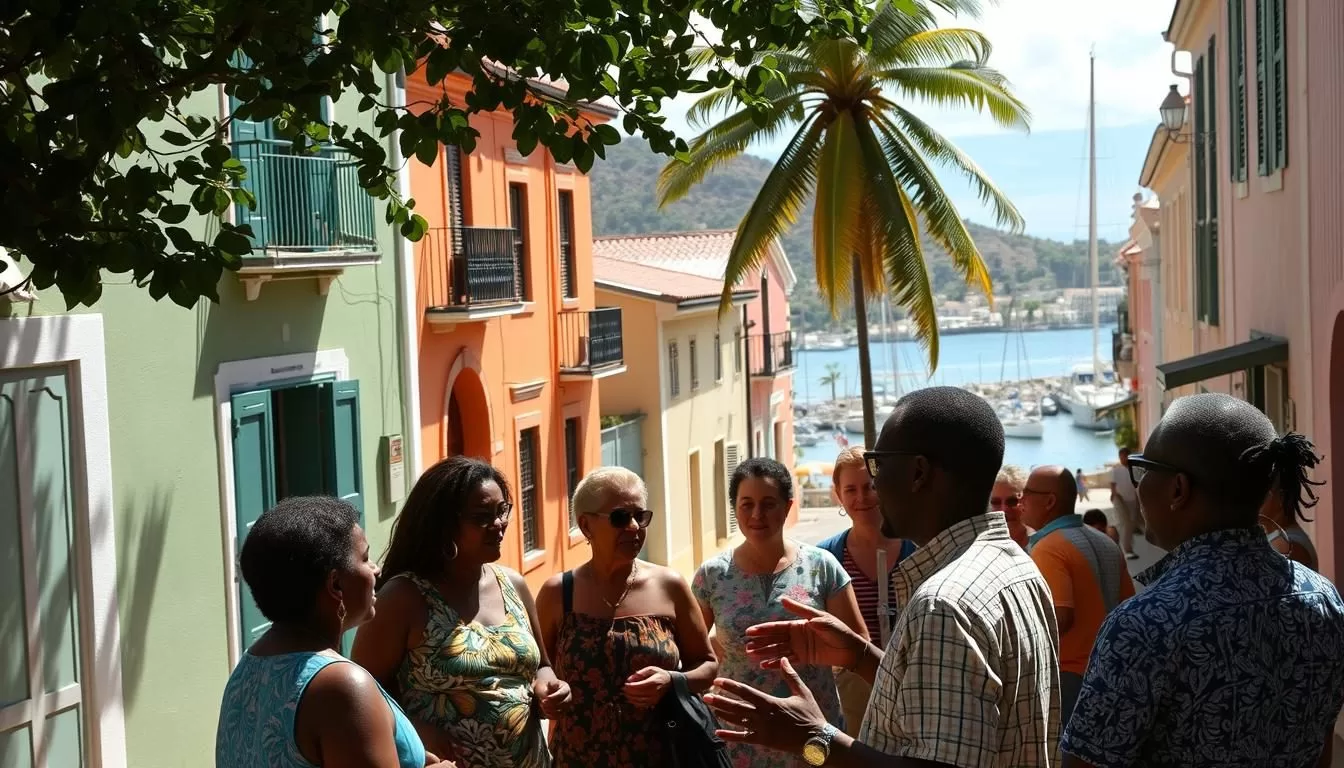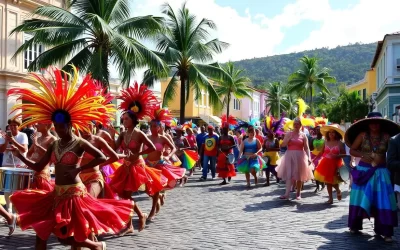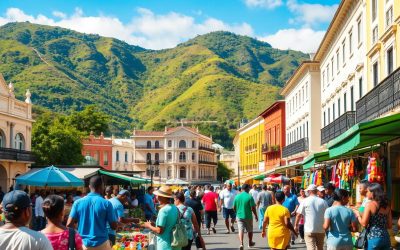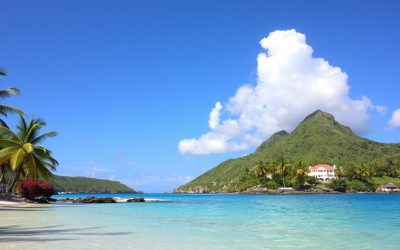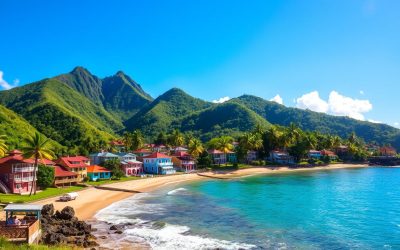✓ Accommodations✓ Flights✓ Rental Cars✓ Tours & Activities
Welcome to Saint Lucia, a vibrant Caribbean island known for its stunning landscapes and rich cultural heritage. This country is not just a tropical paradise but also a melting pot of diverse languages that reflect its history and identity.
English is the official language here, a legacy of British colonization. However, the heart of the island beats with Saint Lucian Creole French, a widely spoken dialect that adds depth to the local culture. This unique blend of languages tells the story of Saint Lucia‘s journey from colonialism to independence in 1979.
As you explore this beautiful island, you’ll notice how language and culture intertwine, shaping the nation’s identity. Whether it’s through road signs or everyday conversations, the linguistic diversity of Saint Lucia offers a fascinating glimpse into its past and present.
Overview of St. Lucia’s Linguistic Landscape
Exploring the languages of Saint Lucia reveals its diverse heritage. The island’s linguistic tapestry is a product of centuries of settlement and cultural exchange. From indigenous roots to colonial influences, every word spoken here tells a story.
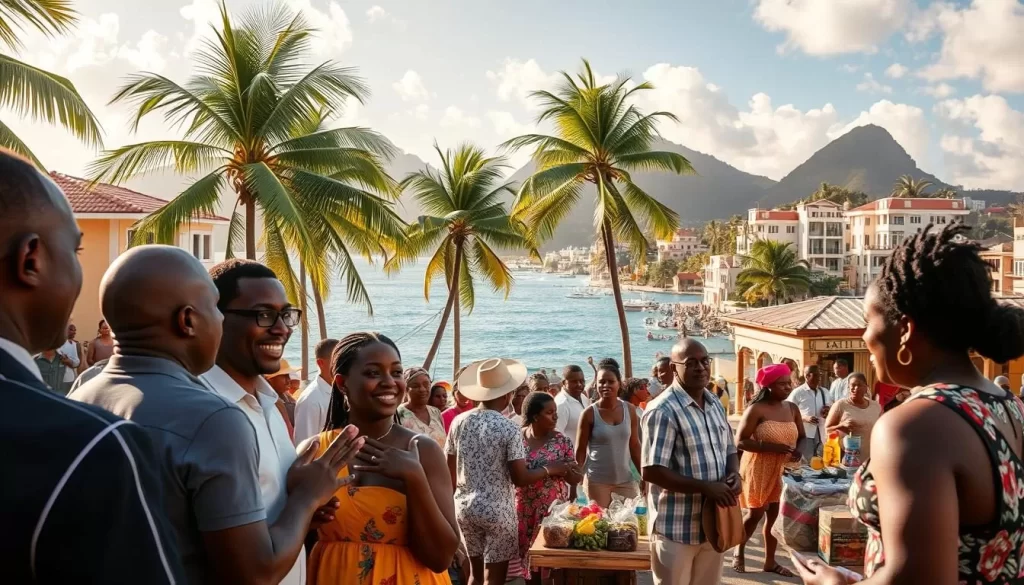
Historical and Cultural Context
Saint Lucia’s history began with the Arawaks and Caribs, the island’s first inhabitants. Their languages laid the foundation for the island’s linguistic identity. Over time, European powers like the French and British arrived, bringing their own tongues.
These colonial periods left a lasting mark. The blend of indigenous and European languages created a unique cultural environment. Today, this mix is evident in the way people communicate and express themselves.
Diverse Language Influences
The island’s population has been shaped by waves of settlement. Each group brought its own language, contributing to the rich linguistic diversity. From African dialects to European languages, the influences are vast.
This diversity is not just historical. It continues to evolve, reflecting the island’s dynamic culture. Whether in music, literature, or daily life, the impact of these languages is everywhere.
| Historical Period | Language Influence |
|---|---|
| Pre-Colonial | Arawak and Carib dialects |
| French Colonization | French and Creole |
| British Colonization | English |
| Modern Era | Blend of English and Creole |
The Official Language: English
The Treaty of Paris in 1814 marked a turning point for English in this country. It solidified British control, making English the dominant language. Over the centuries, it has remained a cornerstone of governance and education.

Colonial Roots and Modern Usage
British control shaped the linguistic landscape. The Treaty of Paris was a key event that cemented English as the official language. Today, it is used in all formal settings, from legal documents to media broadcasts.
Despite its colonial origins, English has become a unifying force. It bridges diverse communities and ensures clear communication across the country. This evolution reflects the nation’s ability to adapt while preserving its heritage.
Government and Education
English is the language of governance. The prime minister and other ministers conduct official business in English. This ensures transparency and accessibility for all citizens.
In education, English is the primary medium of instruction. Schools teach it from an early age, preparing students for global opportunities. This focus on English has helped the country thrive in international arenas.
“Language is the road map of a culture. It tells you where its people come from and where they are going.”
| Area | Role of English |
|---|---|
| Government | Official communication, legal documents |
| Education | Primary medium of instruction |
| Media | Broadcasting, newspapers, and online content |
St. Lucia: Official and widely spoken languages
The linguistic duality of Saint Lucia offers a fascinating glimpse into its cultural richness. Here, English and saint lucian creole coexist, creating a dynamic environment where history and modernity blend seamlessly.
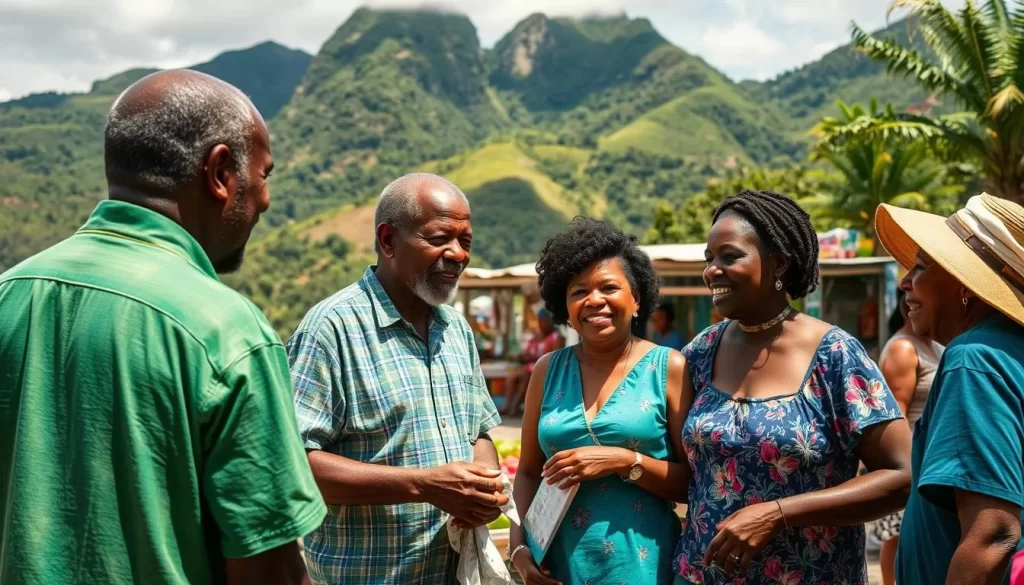
While English serves as the official language, lucian creole french is the heartbeat of daily communication. This unique dialect, often called antillean creole, is a blend of French, West African, and indigenous influences. Its vocabulary and syntax reflect the island’s diverse heritage.
You’ll notice how this dual language system shapes everyday life. From marketplaces to family gatherings, the interplay between English and Creole creates a vibrant cultural expression. This mix is more than just words—it’s a reflection of the island’s identity.
Understanding the Dual Language Environment
The origins of lucian creole trace back to colonial times. French settlers and African slaves combined their languages, giving birth to this distinct dialect. Over time, it evolved, incorporating elements from Carib and other indigenous tongues.
Today, language saint lucia is a symbol of resilience and adaptation. It’s not just a way to communicate but a testament to the island’s history. Whether in music, storytelling, or casual conversations, Creole adds depth to the cultural experience.
Exploring this linguistic landscape, you’ll discover how french creole continues to thrive. It’s a living language, constantly evolving while staying rooted in tradition. This duality is what makes Saint Lucia’s culture so unique and captivating.
Saint Lucian Creole French: Heritage and Modern Expression
Saint Lucian Creole French is more than just a language; it’s a living testament to the island’s rich history. Spoken by about 95% of the population, this vibrant dialect, also known as patois, reflects a unique blend of French, West African, and Carib influences. It’s a language that tells the story of resilience, adaptation, and cultural pride.
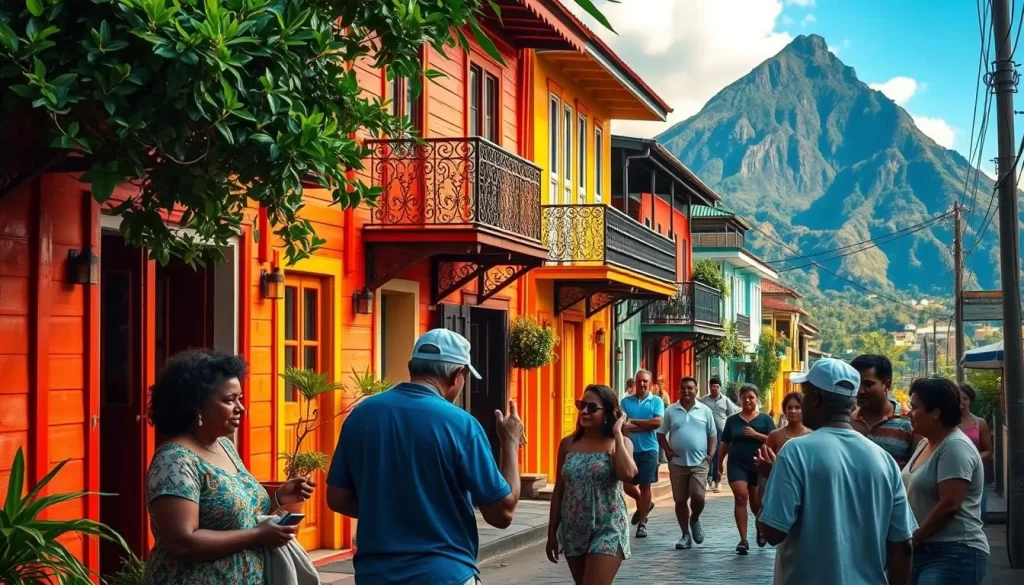
Language Characteristics and Vocabulary
The vocabulary of creole french is a fascinating mix of words from multiple language families. Words like “lambi” (conch shell) and “zandoli” (lizard) showcase its indigenous roots, while phrases like “bonjou” (good morning) highlight its French heritage. This linguistic fusion makes it a dynamic and expressive form of communication.
Its syntax and grammar also reflect its diverse origins. For example, the use of double negatives, common in West African languages, is a distinctive feature. This blend of influences makes saint lucian creole a unique linguistic treasure.
Role in Music and Literature
Music and literature are two areas where creole french truly shines. From traditional folk songs to modern calypso, the language adds depth and authenticity to the island’s musical heritage. Artists like Machel Montano have even incorporated it into their work, bringing it to a global audience.
In literature, Creole is used to tell stories that resonate with the local experience. Writers like Derek Walcott have celebrated its richness, using it to capture the essence of Saint Lucian life. This cultural expression keeps the language alive and relevant.
Cultural Celebrations and Daily Life
Cultural events like Jounen Kwéyòl (Creole Day) highlight the importance of saint lucian creole in daily life. This festival, celebrated in October, features traditional music, dance, and cuisine. It’s a time when the community comes together to honor their heritage.
In everyday settings, Creole is the language of family and community. Whether at the market or around the dinner table, it fosters a sense of belonging. This connection to daily life ensures that the language continues to thrive, bridging the past and the present.
Indigenous and Historical Tongues
Long before European settlers arrived, the Arawak and Carib peoples shaped the island’s early cultural identity. These groups brought their own languages, which laid the foundation for the island’s linguistic heritage. Their words and expressions still echo in place names and local traditions today.
Native Languages of the Arawaks and Caribs
The Arawaks, originally from south america, were among the first inhabitants. Their language was rich and descriptive, reflecting their deep connection to nature. The Caribs, another influential group, arrived later and brought their own dialects, which blended with the Arawak tongue.
These languages were more than just tools for communication. They were a way to preserve traditions, tell stories, and pass down knowledge. Each word carried the history and identity of the person speaking it.
The Impact of Extinct Indigenous Dialects
Although many of these indigenous languages are now extinct, their influence remains. Words from Arawak and Carib dialects can still be found in local expressions and place names. This linguistic legacy is a testament to the resilience of these early cultures.
The blending of these languages with those from african language families during the colonial era created a unique cultural tapestry. This mix continues to shape the island’s identity, even as it evolves over time.
Exploring these historical tongues offers a glimpse into the island’s past. It’s a reminder of how language and culture are deeply intertwined, shaping the way we understand the world around us.
Colonial Influences and Language Evolution
The colonial history of this Caribbean island is a tale of shifting powers and cultural fusion. Over time, the island changed hands between the French and British, leaving a lasting impact on its linguistic landscape. These alternating periods of french british rule shaped the way people communicate today.
Wars and treaties played a significant role in determining who would control island governance. Each colonial power brought its own language, creating a unique blend that still defines the island’s identity. This historical backdrop is key to understanding the linguistic diversity you see today.
French and British Colonial Legacies
The French were the first to establish a strong presence, introducing their language and culture. This influence is still evident in the Creole dialect spoken by many locals. When the British took control island in 1814, English became the official language, but French roots remained deeply embedded.
This dual legacy is visible in everyday life. From road signs to local traditions, the blend of French and British influences is unmistakable. The island’s position in the lesser antilles made it a strategic location for both powers, further shaping its cultural and linguistic identity.
Key Historical Treaties and Their Impact
Several treaties marked turning points in the island’s history. The Treaty of Paris in 1814 solidified British control island, making English the dominant language. However, the French influence persisted, especially in rural areas where Creole remained the primary means of communication.
These historical agreements not only determined political boundaries but also influenced cultural practices. The interplay between French and British legacies continues to shape the island’s linguistic evolution. To learn more about this fascinating history, visit this source.
| Colonial Power | Language Influence |
|---|---|
| French | Introduction of Creole French |
| British | Establishment of English as the official language |
| Post-Colonial Era | Blend of English and Creole in daily life |
Conclusion
This island’s linguistic journey is a testament to its rich history and vibrant culture. From colonial roots to modern times, the blend of English and lucian creole reflects a unique identity. It’s a story of resilience and adaptation, shaped by the time and influences of different eras.
Today, this dual language system continues to thrive. Families pass down traditions, while the government ensures English remains a unifying force. Whether in the bustling markets or quiet roads, the interplay of these tongues is everywhere.
To truly understand this dynamic place, explore its linguistic heritage. It’s a fascinating blend of history and modernity, waiting to be discovered.
The above is subject to change.
Check back often to TRAVEL.COM for the latest travel tips and deals.
